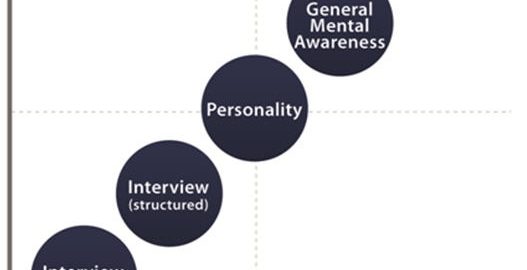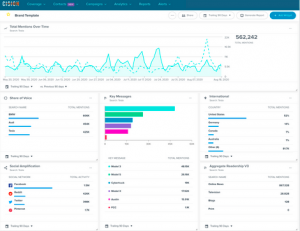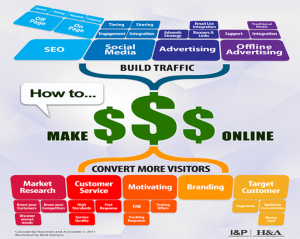ContactBabel, a leading analyst firm covering the call center industry that is based in the UK, recently released their 2011 US Contact Center Decision Makers’ Guide (2011 Guide). FurstPerson provided sponsorship of the report.
The report covers topics focused on people, process, and technology. The report is based on extensive interviews with 209 contact centers across a broad number of industry groups and agent size. The report provides information on how your peers view the industry, including its recruitment and hiring practices.
This well-researched report from ContactBabel provides data on how the respondents answered questions on various topics. In our brief, we want to provide some alternative thoughts based on our practical experience and research working with contact center organizations. Specifically, in this posting, we will provide our insights into the most effective tools for hiring contact center agents.
What Hiring Tools Are Need to Find the Right People for Open Call Center Positions?
When an organization builds the hiring process for a particular job, the effort to link the hiring tools to the job’s competency model is critical. For example, the 2011 Guide points out that 88% of the respondents indicated that agents must access more than one application when handling customer contacts. Multi-tasking, not surprisingly, was selected as an important competency for successful job performance. This begs the question, What is the best way to measure multi-tasking – an interview, a personality assessment, a call center simulation? Without identifying the most effective assessments/hiring tools to measure the critical competencies that drive job performance, call center hiring managers significantly inhibit their ability to accurately measure candidates’ skills, abilities, and work behaviors, putting them at a disadvantage in their efforts to identify the most qualified agents.
The 2011 Guide outlines contact center respondents’ opinions on the effectiveness of various assessments/hiring tools. The face-to-face interview was consistently rated as the most effective hiring tool according to these respondents.
How effective are the top recruiting methods?
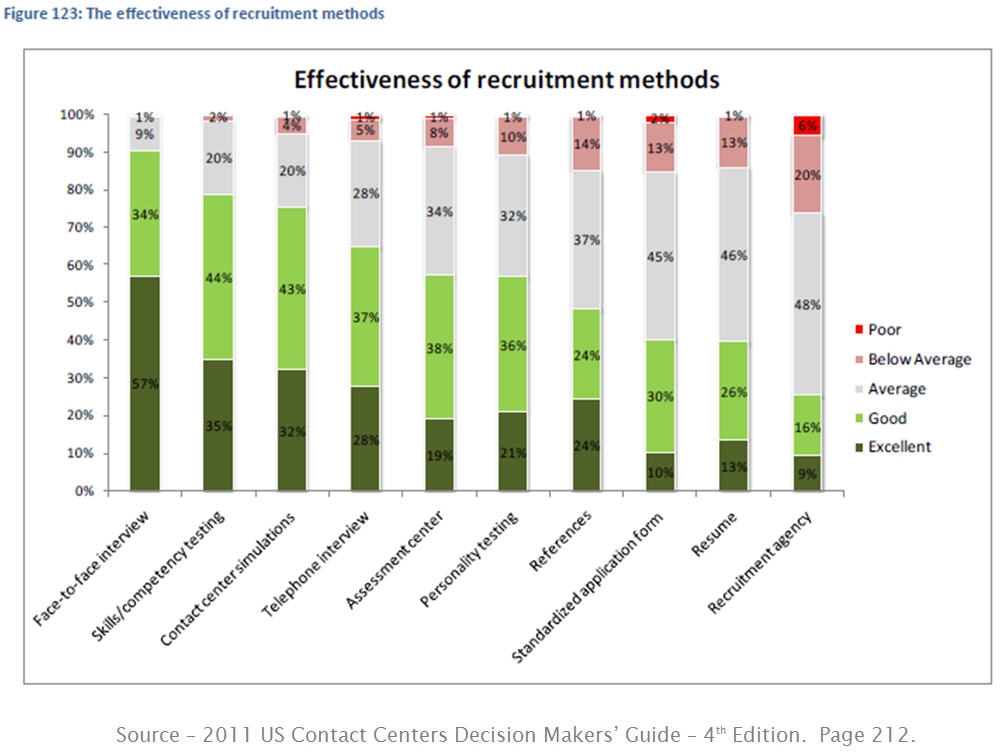
Simulations, personality assessments, and cognitive ability tests all outperform the interview when it comes to accurately measuring candidates’ qualifications and predicting which candidates will demonstrate better on-the-job performance
We have discussed the role of the interview in previous articles. While the interview is an important tool to develop rapport with the candidate, evaluate oral communication, and provide additional predictive power in certain well-structured formats, FurstPerson research and other well-documented empirical literature has shown that the interview is much less effective than many other types of assessment tools. For example, simulations, personality assessments, and cognitive ability tests all outperform the interview when it comes to accurately measuring candidates’ qualifications and predicting which candidates will demonstrate better on-the-job performance. The ideal approach is a combination of these assessments plus an interview. This enables the hiring manager to measure work habits (interview), work attitudes (personality), work ability (cognitive), and work skills (simulation).
How Different Types of Assessments Rank in Predicting On-the-job Performance of Candidates
The chart below illustrates the relative “predictive power” of different types of assessments. The 2011 Guide does highlight a critical trend related to “proof of concept” in the use of any tools for contact center hiring:
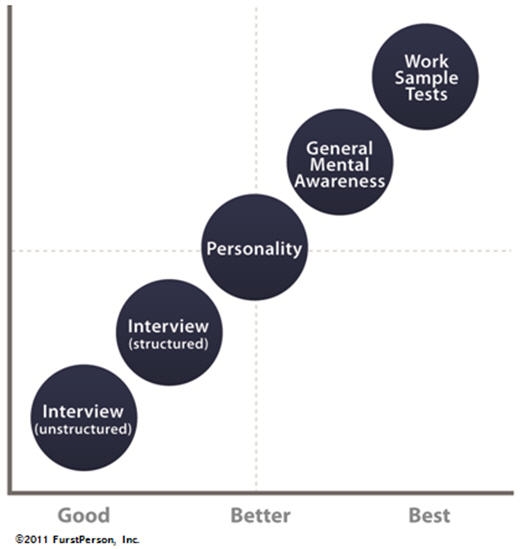
Businesses can improve their ongoing recruitment techniques
“By tracking the in-job performance of applicants who scored either well or poorly in pre-job assessments, businesses can improve their ongoing recruitment techniques. For example, agents who have high assessment test scores often have higher revenue-per-call ratios, lower average call lengths and lower attrition rates than those who scored lower in pre-job character and personality assessments. The behaviors, personality traits and characteristics that a top agent is most likely to have can then be identified, and the results fed back into the top of the recruitment process. This allows the recruitment process to seek out the types of people who have already been proven to succeed in that role.” (page 211 from the report.)
Taking the time to conduct an empirically based analysis of the job, identify the competencies required for success in that job, and then match the right hiring tools to evaluate job candidates on those competencies enables the organization to select talent based on real performance drivers. The net result is better new hire retention and job performance that can be quantified into a business case.
Those respondents who supported a performance driven hiring process backed by empirical research and carefully chosen selection tools have highlighted the right approach to call center hiring.
Image courtesy of FreeDigitalPhotos.net
Business & Finance Articles on Business 2 Community
(60)
Report Post